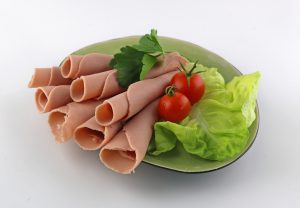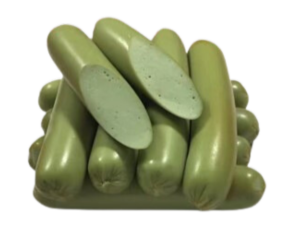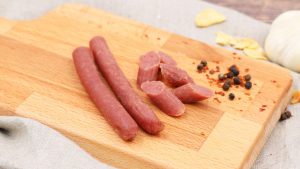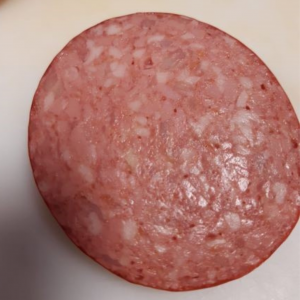Definition of sausage
What exactly is a sausage? We use the following definition of sausage.
Sausage is:
- Made from small pieces of meat, ranging from a few millimetres in size to an emulsified paste
- It can be mixed meat with other meat by-products, such as organs and/or non-animal ingredients, salts and spices
- It has been put into a (natural) casing for cooking, smoking, pickling, fermenting, drying or treating the meat mixture
- Has been made the same way for thousands of years in history
- Sausage is easier to make with modern technologies, machines and exotic recipe chemicals
It is not easy to classify the enormous variety of sausages. Germany alone has more than 1200 different types of sausages recognised by the authorities. There are several ways to classify sausages: according to the method of processing and consumption of bases on the production process (South East Asia and China)
Sausage classification according to method of processing and consumption
One way to classify sausages is to look at the way they are processed and consumed. Then the following classification is used.
Fresh sausage
- Mixture of ground or minced meat, fat, spices, colouring or additives
- Stuffed in an edible casing or made into patties or served in bulk
- Good for 3 to 7 days
- Contains Breakfast Pork Sausage and Fresh Italian Sausage
Fresh Smoked Sausage
- Same mixture as fresh sausage
- Usually brine salts are added
- Filled in edible casings or made into patties. Can also be put in plastic tubs
- Smoked to add flavour and promote the curing process
- Includes Country Sausage, Kielbasa and Mettwurst
Boiled sausage
- Usually refers to emulsified white or light-coloured sausages that have been cooked but not smoked or dried.
- Includes Braunschweiger and Leverwurst
Cooked Smoked Sausage
- Most common type in the US
- Can be made from emulsion or ground or chopped meat
- Is cooked and then smoked or smoked during cooking
- Keeps well in vacuum packs and long in the fridge
- Includes Frankfurter, Hotdog, Vienna, Bologna and Dinner Sausages
Semi-dry sausages
- Ground or minced meat with fat, seasoning
- Fermented with lactic acid
- Dried to 85% of the original weight
- Stable without refrigeration
- Often called summer sausages because they are made in winter for consumption in summer
- Includes Cervelat, Mortadella and Salami
Dry sausages
- Can be coarse ground or minced meat, but is always fermented and dried, usually smoked
- Final weight is 50-60% of raw weight
- Very stable with long shelf life
- Includes Pepperoni, Cappicola, Chorizo, and Hard Salami
Prepared meats
- Includes many types of food that are stuffed into animal casings but do not have the traditional cylindrical shape
- Includes Haggis. A Scottish sausage made from intestines, sometimes meat, fat and oatmeal. It is cooked in a stitched sheep’s stomach
Sausage classification based on the production process
This sausage classification is used in Southeast Asia and China
- Fresh sausages (uncooked, raw)
- Low temperature sausages (cooked sausages)
- Medium temperature sausages (cooked sausages plus post-pasteurisation)
- High temperature sausages (sterilised, autoclave)





